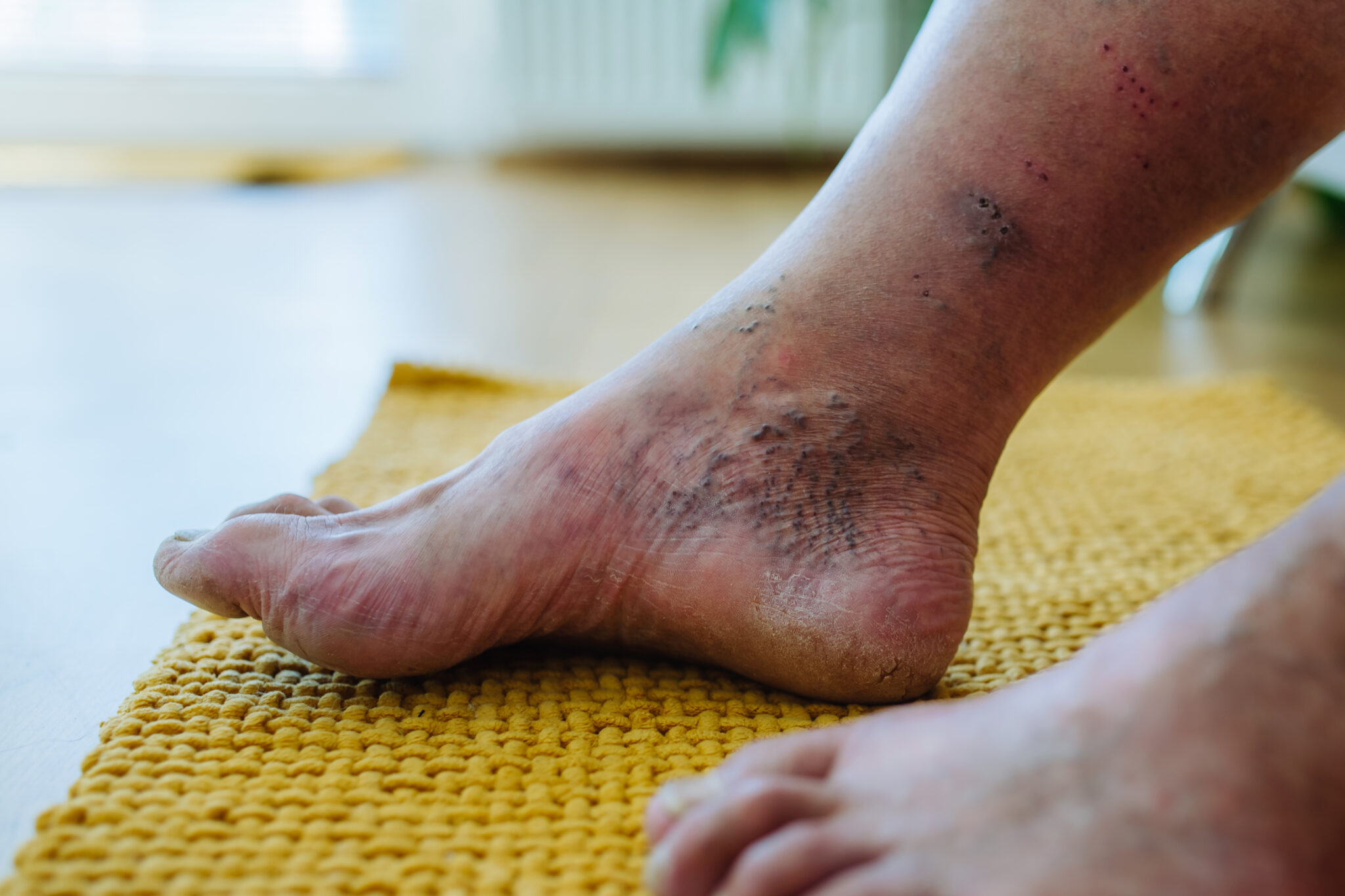
What is Diabetic Foot?
Diabetic foot refers to a group of complications that can arise in individuals with diabetes, primarily due to nerve damage (neuropathy) and poor circulation (vascular disease). These complications can include foot ulcers, infections, deformities, and impaired wound healing, putting individuals with diabetes at increased risk of serious foot problems.
How is Diabetic Foot treated?
The treatment of diabetic foot involves a multidisciplinary approach aimed at preventing, managing, and treating foot complications associated with diabetes. This may include regular foot examinations, proper foot care and hygiene, glycemic control to prevent nerve damage and promote wound healing, offloading pressure points with orthotic devices or footwear, and wound care management. In severe cases, surgical interventions such as debridement, amputation, or vascular procedures may be necessary.
Who is at risk for Diabetic Foot?
Individuals with diabetes, particularly those with poorly controlled blood sugar levels, are at increased risk of developing diabetic foot complications. Other risk factors include peripheral neuropathy, peripheral arterial disease, foot deformities, smoking, and a history of foot ulcers or amputations. It's essential for individuals with diabetes to undergo regular foot examinations and practice preventive foot care to reduce the risk of diabetic foot complications.
What are the symptoms of Diabetic Foot?
The symptoms of diabetic foot can vary depending on the specific complications present. Common symptoms may include foot ulcers, open sores, redness, warmth, swelling, pain or tingling in the feet, changes in skin color or texture, and difficulty walking or bearing weight on the affected foot. Individuals with diabetes should seek prompt medical attention if they experience any signs or symptoms of diabetic foot complications.
What is the recovery process like after treatment for Diabetic Foot?
Recovery from diabetic foot complications depends on the severity of the condition and the effectiveness of treatment. In some cases, minor foot ulcers or wounds may heal with proper wound care and offloading techniques. However, more severe complications such as deep infections or foot deformities may require more extensive treatment and rehabilitation. It's essential to follow post-treatment instructions provided by the healthcare provider, including regular foot examinations, proper foot care, and lifestyle modifications to prevent recurrence.
What are the risks and complications associated with Diabetic Foot?
Diabetic foot complications can lead to serious health risks and complications if not properly managed. These may include foot ulcers, infections, gangrene, Charcot foot (a condition causing foot deformities and fractures), and lower limb amputations. Additionally, individuals with diabetic foot complications may be at increased risk of developing systemic infections, sepsis, or other diabetic-related complications.
Why choose VMG Hospital for Diabetic Foot?
VMG Hospital in Hisar, Haryana, is a trusted provider of diabetic foot care, offering comprehensive services and personalized treatment plans to individuals with diabetes. Our multidisciplinary team of healthcare professionals, including podiatrists, vascular surgeons, endocrinologists, and wound care specialists, collaborates to provide integrated care and optimize outcomes for patients with diabetic foot complications. With a focus on preventive care, patient education, and advanced treatment modalities, VMG Hospital is committed to helping individuals with diabetes maintain foot health and overall well-being.